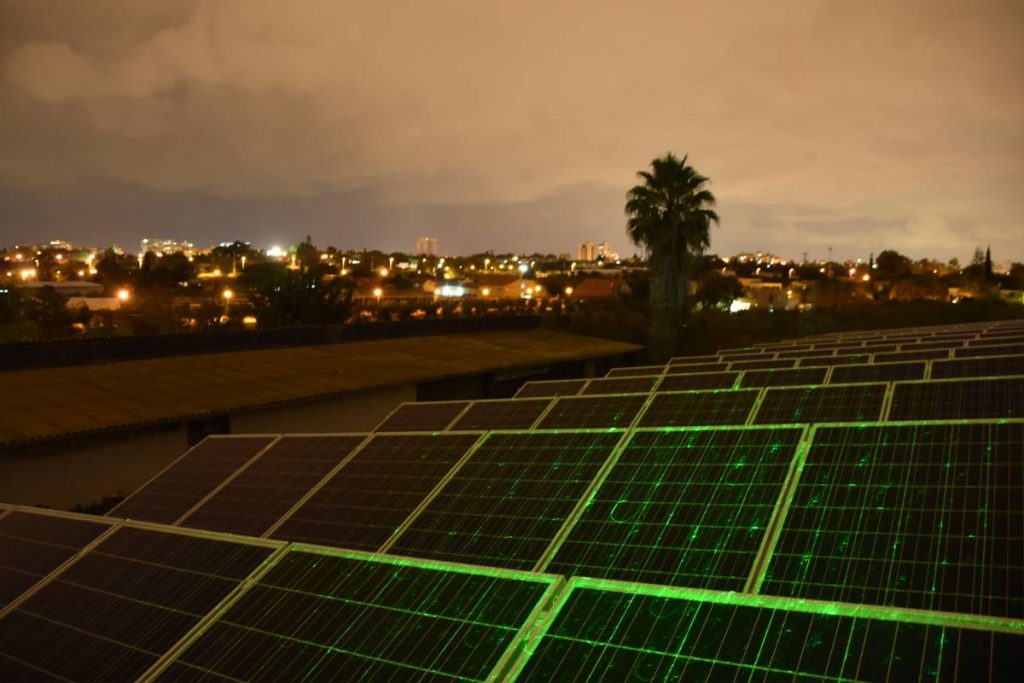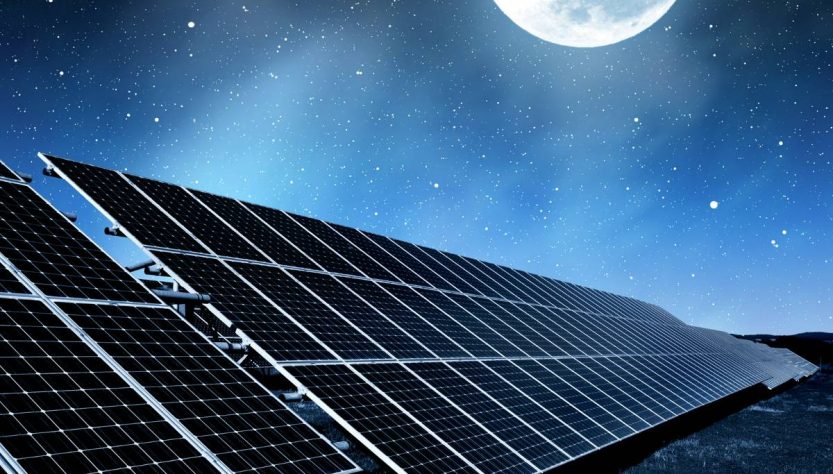Solar panels can provide electricity but they can not draw any power from the sun at night. But of course, we can’t stop there. Going into details will clarify some things for you. To scratch the surface, you’ll need to understand the electrical elements of solar, terms like amp hours, kilowatts and irradience.
To understand why solar systems can work on cloudy days but not at night, you must understand how they work and the science of their photovoltaic cells.
What Are Solar Panels?
A solar panel is a component of the solar power system generates electricity from direct sunlight. Solar panels are usually on the rooftops, but they can also be on the ground if the building doesn’t have enough roof space.
The required number of solar panels depends on certain factors, such as how much electricity you consume or the size of your home, peak sun hours, the panel wattage, etc. There are different kinds of solar panels – monocrystalline, polycrystalline, and thin-film solar panels. All three generate power but at different efficiency ratings.
To make up a complete solar system, the solar panels work together with an inverter to convert the direct current from the panels to an alternate current and a solar battery to store excess energy. Solar installations also have a charge controller to regulate the amount of voltage to charge the battery.
Residential and commercial solar panels installation incur varying expenses. There’s also utility-scale solar panels installation which focuses on energy production for an entire city or country depending on its capacity.
How Do Solar Panels Work?
At this point, you already have an overview of the system. Let’s go straight to the science of solar technology to give you a better insight.
By its very nature, the solar panel produces energy from direct sunlight. It’s made up of several solar cells. These cells are typically manufactured with two thin silicon wafers. Silicon is a semi-conductive material that doesn’t transmit electric currents efficiently. This is why the solar company adds impurities to the wafers to make them better conductors of electricity.
Phosphorus is added to one wafer or layer to increase the number of free electrons in it. This is the negative layer. On the other hand, boron is added to the second layer to enhance the number of receptors for free electrons in it. This is the positive layer. Both layers make up an electrical field within the panel where electrons move freely.
When the Sun rises, sunlight hits the surface of the panels. The rays of the Sun contain photons that dislodge the electrons in the solar cell and create an electron space in the process. This, in turn, activate the electric field in the solar panel to move the space to the positive layer and the free electrons to the negative layer.
The movement of these electrons in the electric field is what creates the electric current. This is how the solar panels produce electric current from sunlight, and the inverter converts it into usable electricity for the building.
During peak sunshine hours, the solar panel performance is at full efficiency, generating more electricity than the house can consume. This is where the solar batteries come in. They store excess solar energy for later use.
Do Solar Panels Work at Night?
No, they don’t. At night, there’s no sunlight for the panels to absorb solar energy from. So they’re practically non-functional in generating solar power. However, on certain nights when there’s full moonlight, the solar panels may produce a fraction of the energy they usually produce. This is because moonlight is another natural light that reflects off sunlight.
Though the energy produced by your solar panels may not be up to the minimum voltage required to activate the inverter to convert the direct current to what the home can use.
However, despite the fact your solar panels go into sleep mode, there are still ways solar system owners can enjoy solar power at night.
How to Get Electricity From the Solar Panel System at Night?

Solar systems can provide electricity for the home in two ways. They include storing solar energy and net metering programs.
Solar Energy Storage
This is where the solar energy storage comes in. Solar installers are aware that even the best solar panels won’t function in producing electricity at night. So they install a capacity that can produce more energy than the home needs. Once the panel generates enough power for the home, the excess electricity goes to the solar battery storage.
When night comes, the panels stop producing energy, and the battery then discharges backup power, which is converted by the system’s inverter into alternating current for the home to use. The larger the capacity of the solar battery, the more its capacity to store energy and the longer it will be for it to discharge.
Net Metering
Net metering is another way to store excess power. If you don’t have a solar battery (grid-tied system), you can use the municipal electric grid to store surplus power from the solar panels. Homeowners who export solar energy to the utility grid will earn credits from the utility company, which will pile up on their accounts.
When the Sun sets, the homeowner can draw electricity from the grid. The utility credits will offset the energy cost, reducing or even eliminating their electric bills in the process.
Takeaway
While solar panel works best with direct sunlight, they don’t function efficiently when they’re overheated. These solar panels work on cloudy days and with indirect sunlight. During cloudy weather, sunlight can still penetrate the clouds to reach the surface of the panels and the PV cell. In the case of indirect sunlight, the panels are partially shaded.
The solar panel will be less efficient in both scenarios, but at least they work, unlike when the Sun sets. As solar technology evolves, it’s believed that solar panels will be more efficient in the future and less weather-dependent.

